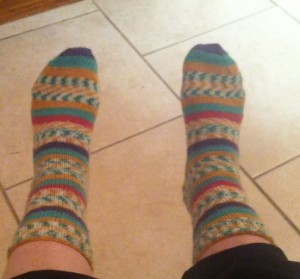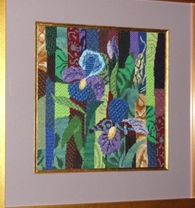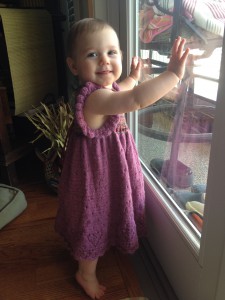This week, we’ve decided to share a little tutorial. How do you make that finished object look as good as the picture on the pattern. The secret is blocking. Take that pile of yarn and make it beautiful.
It all starts with some cold water and a little Soak (or some other gentle wash).
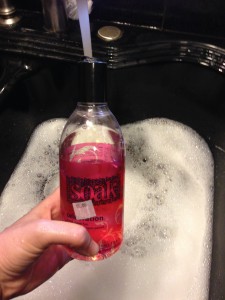
Next just put the thing in the water. No swishing necessary, but if it makes you feel better, go for it. Just keep it mellow.
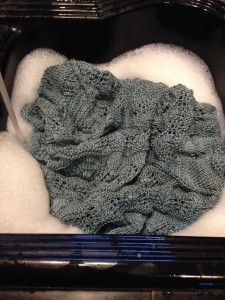
While your FO is soaking in the sink you can prep the flat surface. If you don’t have pets, the floor is safe. Foam mats work, but I find the spare bed is good. I don’t mind putting pins in my mattress.
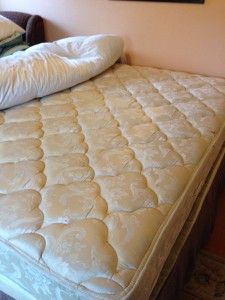
Check on it. It’s almost all wet. It’s been about 20 minutes just calmly soaking up the water.
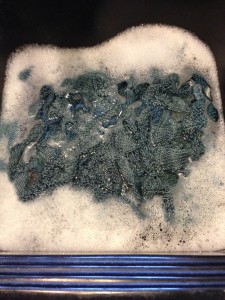
Once it’s good and wet, you can take it out and GENTLY squeeze the excess water out. Do not wring it, you’ll make it sad.
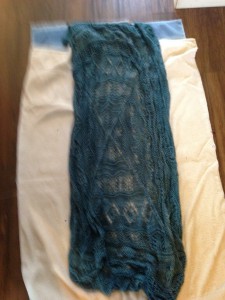
Put it on a towel or two.
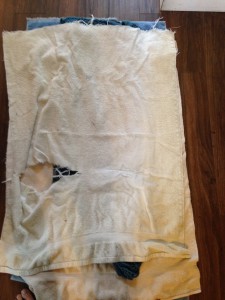
And roll it up.
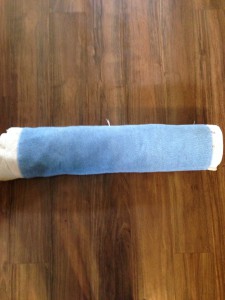
Stand on the towel. I suggest taking off your socks. The towels will absorb a good deal of the moisture.
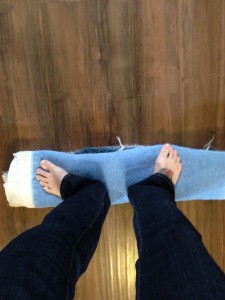
Next up, stretching and pinning.
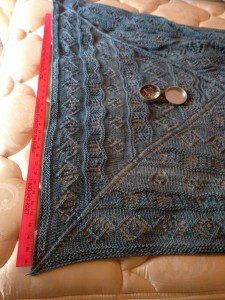
Here is where you refer to the measurements. If the numbers are critical, you measure and pin to the proper dimensions. Sometimes you can stretch it a bit, but don’t overdo. Your purpose here is to smooth and shape, not stretch.
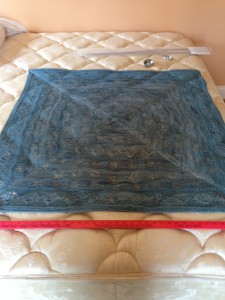
You don’t always have to pin a project. Lace often needs to be pinned since you may have points to accentuate. Some items just need to be smoothed out and allowed to dry. Blocking wires are very handy for shawls and such.
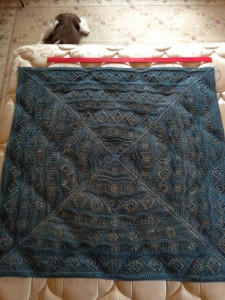
Let it dry completely and you’re done.
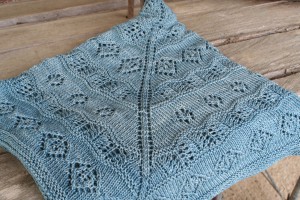
There you have it. I you have any questions, we’re happy to help. Stop in and ask.
May 3 we are having a class…
Reading your Knitting… Join us to learn how to discern mistakes in your knitting and of course to fix them.
Finished Objects
